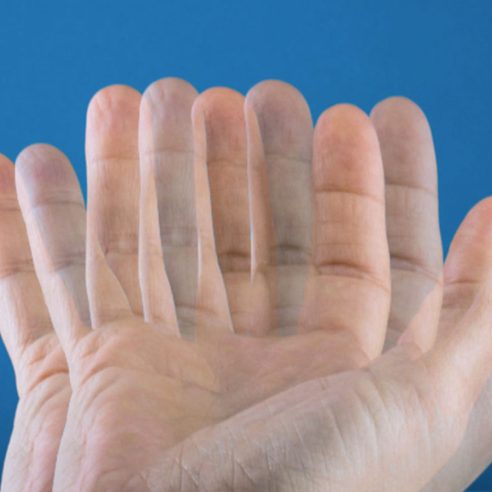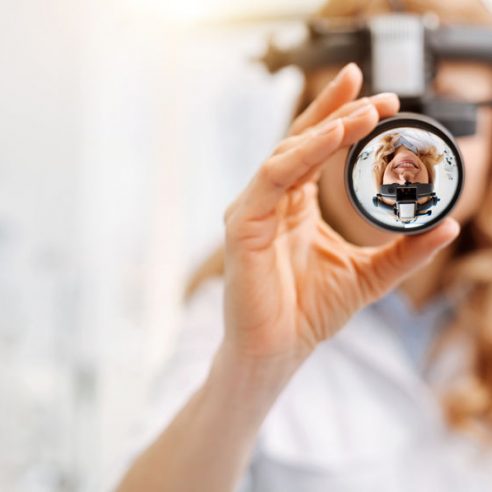
What is hypermetropia?
Hypermetropia affects the ability to see nearby objects. You may be able to see distant objects clearly, but closer objects, even words in a book, are usually out of focus. Hypermetropia occurs when the eye does not focus light properly on the retina (the light-sensitive layer at the back of the eye). Severe hypermetropia can make everything appear blurry, regardless of distance.
Who is at risk of hypermetropia?
Hypermetropia often affects adults over 40, but it can affect people of all ages – including babies and children. In children hypermetropia is usually genetic. Babies and young children can suffer from hypermetropia, but this should eventually correct itself as children get older. However, it can happen that one eye becomes lazy (amblyopia). This is because the eye with the poorest vision is ignored by the brain and does not learn the correct way to see. If this is not corrected in young children, there is a risk that the weaker eye will never see as well as the other eye.
What are the main symptoms of hypermetropia?
Symptoms vary depending on the age of the patient and the severity of the refractive error. The patient may be asymptomatic. Low refractive error in young patients is usually corrected by mild accommodative effort without producing symptoms. But if the eye muscles have to work harder, you may develop symptoms such as:
- Some people have trouble just focusing on nearby objects, while others can struggle to see clearly at any distance.
- You find that nearby objects appear blurred and out of focus, but distant objects are clear
- You have to squint to see clearly
- Have tired or strained eyes after activities that involve focusing on nearby objects, such as reading, writing or working on a computer
- Headaches
- Slight aversion to light/photophobia
Children with hypermetropia often don’t initially have obvious problems with their vision. But if left untreated, it can lead to problems such as the lazy eye.
What causes hypermetropia?
Eyes affected by hypermetropia do not refract (bend) light properly. They under-focus light and form an incomplete image on the retina. When this happens, you cannot see clearly.
To make it easier to understand, consider how normal vision works.
- The light penetrates the eyes.
- Light refracts when it passes through two parts. First the cornea, the covering at the front of the eye, then the lens, a clear part that focuses light deeper into the eye.
- Light forms a focused spot on the retina, a thin layer of tissue at the back of the eye
- The retina sends information to the brain.
- The brain translates messages into images.
Hypermetropia occurs when there is a problem with the second step, the refraction.
This may be because:
- The eyeball is too short. This means that the retina is closer to the pupil, causing light to pass past the retina. A normal eye is usually about 23 mm long, so a hypermetropic eye will be shorter than 23 mm.
- The cornea (the transparent layer at the front of the eye) is too flat. The cornea needs to be curved to direct light to the retina.
- The lens inside the eye cannot focus properly
Sometimes hypermetropia can be the result of genes you inherited from your parents or a lens in your eyes that is more rigid and less able to focus as you age.
How can Hypermetropia be prevented?
There’s no proven way to prevent hypermetropia, but you can keep your eyes healthier by taking a few steps:
- A proper diet: dark green leafy greens are good for your eyes, as are fish rich in omega-3 fatty acids.
- Get regular ophthalmological examinations: an ophthalmologist can check for eye problems before you have symptoms.
- Wear sunglasses, even on cloudy days – choose sunglasses that block 99% or more of the sun’s ultraviolet (UV) radiation.
- Rest your eyes regularly: looking at a computer or reading for long periods of time can tire your eyes. Every 20 minutes, look at something far away for 20 seconds.
What investigations are needed for hypermetropia?
Hypermetropia is detected during an ophthalmological examination. It is usually recommended to have an examination at least once every 2 years, but you can have a test at any time if you have concerns about your vision.
Ophthalmological examinations are painless and may involve:
- Eye drops: Special eye drops can be used to dilate your eyes. The drops will increase the size of the pupils (the black center of the eye) to let in more light and allow the ophthalmologist to examine the retina.
- Autorefractometry: This instrument measures the refractive error or severity of the problem. The instrument looks like a large frame with lenses. It helps your ophthalmologist determine how to correct your vision.
- Biomicroscopy: Your ophthalmologist will focus a special light into your eyes to see how it reflects in the retina. This step helps you determine if you are farsighted or nearsighted. This isn’t commonly done, except in pediatric cases (for children).
How is Hypermetropia treated?
Children and young adults with hypermetropia may not need any treatment, as their eyes are often able to adapt to the problem and their vision may not be significantly affected.
Treatment is usually necessary in older adults, especially those over 40, because the eyes become less able to adjust as they age.
There are several ways in which hypermetropia can be corrected. The main treatments are:
- prescription glasses – these have lenses designed specifically for you, which ensure that the light is focused correctly on the back of your eyes
- contact lenses – some people prefer them to glasses because they are lightweight and virtually invisible
- laser surgery – the laser is used to change the shape of the cornea, which can mean you don’t have to wear glasses or contact lenses
- Lens implant surgery
Glasses are the simplest and safest treatment. Contact lenses and laser surgery have a low risk of complications and are not usually indicated for children.
Hypermetropia does not go away unless you have surgery. Even with surgery, you may find that the disorder returns after a few years.
With glasses and contact lenses, your vision can improve and fade over time. It is important to wear glasses or contact lenses whenever your eye doctor recommends it. You should also have regular ophthalmological examinations if you need to change your lens diopters.






























